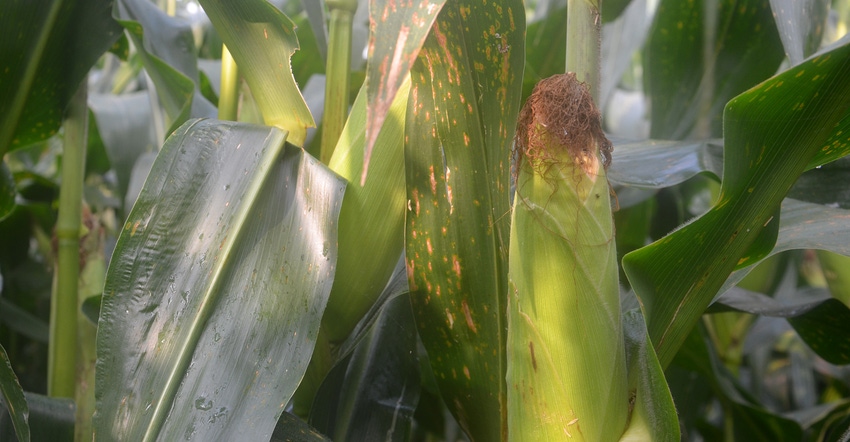
Does this sound like you? “I’ve heard so many stories about when to apply fungicide that I’m confused. Should it be applied pretassel, at silking or not until silks are brown? If my only choice is pretassel due to applicator availability, should I spray or pass?”
If you’ve found yourself in that pickle before, read what the panel of Indiana certified crop advisers has to say. The panel includes: Traci Bultemeier, accounts manager, DuPont Pioneer, Fort Wayne; Gene Flaningam, Flaningam Ag Consulting LLC, Vincennes; and Bryan Overstreet, Purdue University Extension ag educator, Jasper County.
Flaningam: Applying fungicide to corn will depend upon the hybrid. Disease resistance and tolerance will vary from hybrid to hybrid. Applying pretassel vs. brown silk will depend upon the season. If we have an early disease infestation, then apply fungicide early. I personally like to apply fungicide at or near brown silk stage. This will give more of an extended late-season protection during grain fill.
Bultemeier: We’ve learned over time and [through] research that non-ionic surfactant used with the fungicide application is one of the potential causes of abnormal ear occurrence. If NIS is used, the application should be made after brown silk has occurred on 100% of the field to avoid any potential issues.
Remember that if there has been uneven emergence, this can influence actual growth stage of each plant, creating variability within the cornfield.
If NIS is removed and not part of the application, then the best time to apply fungicide is when pollination is complete. In other words, it’s when you can gently remove the husks around the ear and all silks fall off naturally. In that case, you know that pollination is complete even if most of the silks are still white instead of brown. At this point for the plant, any disease that has occurred can be shut down.
Overstreet: The first thing I would do is evaluate if you really need to apply a fungicide in the first place. I would look at the resistance package of my hybrids, field history of disease pressure, determine if the weather outlook is favorable for the diseases I am most concerned about, and scout fields to see if disease pressure is near the threshold of needing to spray.
With margins very tight, ask yourself if you’re really going to gain enough [in yield] to pay for the application, or if you’re going to spend money that you don’t have to spend. For example, if the cost of the fungicide application is $28 per acre and corn is $3.50 per bushel, it will take an extra 8.5 bushels per acre just to break even.
The best timing of the application depends on many variables, including what disease you’re trying to control and weather patterns. If you decide to spray pretassel, you are shortening the window on disease control. However, if the disease is already present, this would be the best time to spray. If the disease is a problem now, it will cause the most injury. Check labels for which surfactants can and can’t be used.
About the Author(s)
You May Also Like




